July 2019
From Cindy Jepsen:
|
|
 |
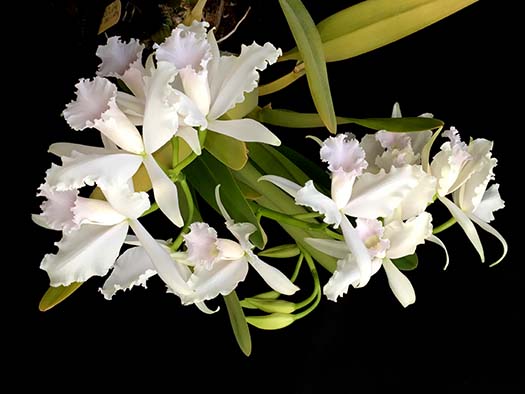
Laelia purpurata f. delicataI received this orchid several years ago from an orchid friend and it was “huge”. I made several divisions and they all died, accept this one. I just couldn’t keep it hydrated enough so I repotted it into a 2 gallon Geopot with bark. It’s made from a breathable felt-type fabric that provides good aeration and drainage while protecting the roots. It’s been in this pot for two years now and is thriving. It sits high in my greenhouse and gets watered several times a week with RO water and is feed weekly with MSU, Seaweed or Superthrive. |
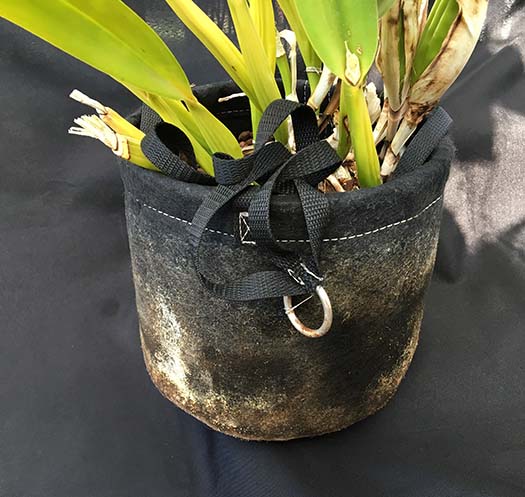 |
|
Encyclia belizensis var. parvifloraGrowing high in the greenhouse, temp currently 75 degrees humidity 60% potted in bark |
|
From Scott McGregor:
|
|
Dendrobium parvulum (blue)Long-lasting flowers continue to open, an even better show than last month. |
Elleanthus amethystinusElleanthus amethystinus blooms with clusters of cheerful and colorful flowers at the end of its thin 2' canes. This one is an easy grower and doesn't need as much sun as many of the related Sobralias. |
Angraecum equitansAngraecums from the Madagascar highlands do well outside here. This M. equitans reliably blooms for me every June.
|
Angraecum rutenbergianumAnother Madagascar Angraecum well suited to outdoor growing in coastal Southern California. My favorite easy-growing outdoor species are A. compactum, didieri, equitans, and rutenbergianum. |
Angraecum didieriWonderful spicy scent at night
|
Bulbophyllum yasnaeNothing like some brightly colored orange flowers to brighten up a “June gloom” day—this easy-to-grow Bulbophyllum has reliably bloomed for me outdoors since I got it in 2011. It is also known by synonyms Bulb. thairoum or papilos yellow form. |
Bulbophyllum wendlandiumEasy outdoor grower and reliably blooms every May/June with unusual (and oddly scented) flowers. |
|
Cynorchis uncinataCynorkis is a genus of deciduous terrestrials from Africa and Madagascar that do very well outdoors. Last year my C. uncinata plant produced a single spike with many flowers (2nd picture) from a potato-sized tuber. I found a half dozen small tubers at the end of the year instead of one large one. I planted two in a single pot and so you see the result (first picture). Hopefully they will grow much larger this year! |
|
Dendrobium densiflorumNice intense color and this deciduous Dendrobium doesn’t seem to mind getting rained on in the winter, so good for outside growing.
|
Dendrobium falconeriThis deciduous Dendrobium from the Himalayas blooms on what appear to be lifeless pseudobulbs on long branching rhizomes that dangle from the mount. I’ve found that success outdoors in our climate with this one depends on where the plant came from-- some grow warm and humid (e.g. the Thai form) and others are used to more cold from the mountain foothills. |
Dendrobium hancockiiDendroboium hancockii is fairly easy to grow outdoors and has lots of cheerful bright yellow flowers. It seems to do fine with winter rains and so probably the bloom is triggered by temperature and daylength. |
|
Dryadella liliputianaI like this one—very tiny, but little cyclops eyes… |
Oncidium harrisonianumSmallish Oncidium, but good flower to plant ratio. |
Maxillaria (Christensonella) vittelinifloraFor fans of very tiny orchids… |
|
Stelis alleniiPurchased as Stelis pururea, but the flowers did not look like those, and they don't open fully even in full sun. I contacted Andy Phillips and he identified it as Stelis allenii. (Genus is very confused, several species look similar) |
|
Stelis ariadne |
Jumellea ibityanaA new Angraecoid species for me—just opening… |
Encyclia cyanocolumnaLots of tiny, but long-lasting white flowers with a splotch of color. |
Encyclia vitellinaEasy grower if you can give it the cool and bright conditions that it needs. Difficult otherwise. Gotta love that intense color though! |
From Roberta Fox:
|
|
Outside in the back yard |
|
 |
Laelia purpurata var. russellianaA somewhat unusual color, so I selected it to feature. But all of them are beautiful |
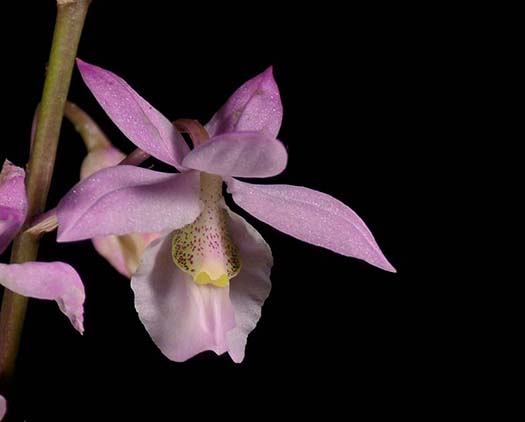 Barkeria melanocaulonAFter blooming, Barkerias tend to shed leaves. The top of the spent spike dries somewhat. However, don't cut until next year's blooming, and only break off the brittle tip of the old spike - what looks dead really isn't. If you cut too far down, you damage the plant. It needs the old canes as reserves. The genus does best mounted or in a basket with no media. It must dry well between waterings, and is very drought-tolerant. |
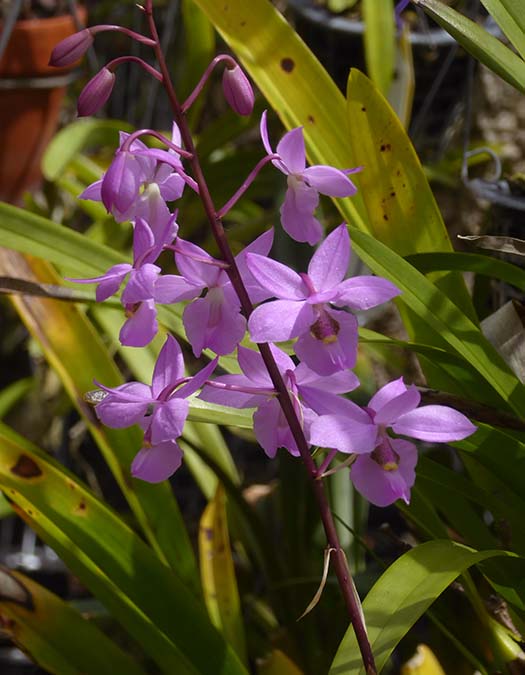 |
Loefgrenianthus blanche-amesiaeThis charming little twig epiphyte is in the Cattleya tribe, like Barkeria. The name is bigger than the plant. the leaves are stiff, but emerge from very thin, wiry stems more reminicent of some of the Pleurothallids. According to the Baker culture sheet in Orchidwiz the temperature range in its Brazilian habitat ranges from 25 - 93 deg F. Clearly, it is a lot tougher than it looks. |
|
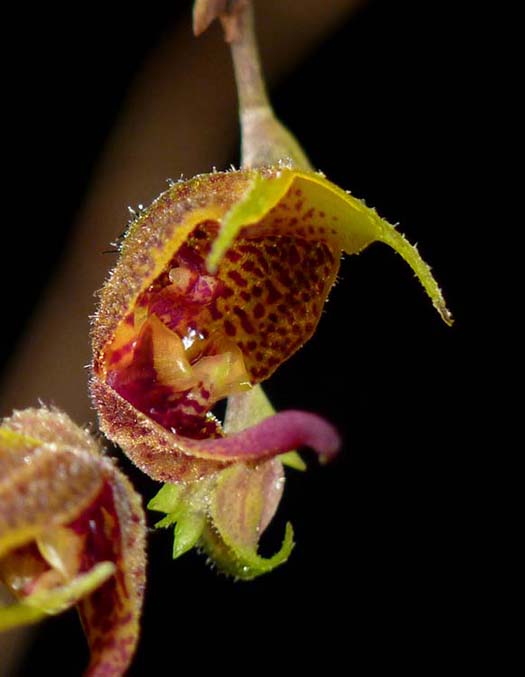 |
 Scaphosepalum beluosumThis one, like several Scaphosepalums that I grow, is always in bloom. When I look for plants to show based on bloom date, these "perpetual bloomers" tend to get neglected. The flowers are small but very intricate, and can be tricky to photograph with all the parts in focus. And there are lots of them. |
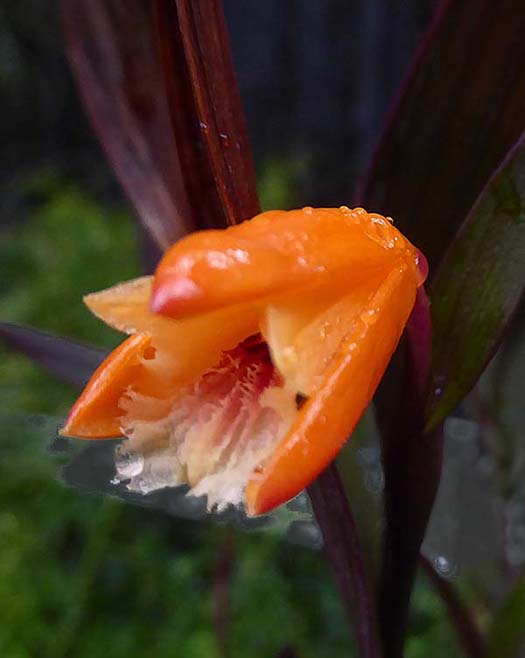 |
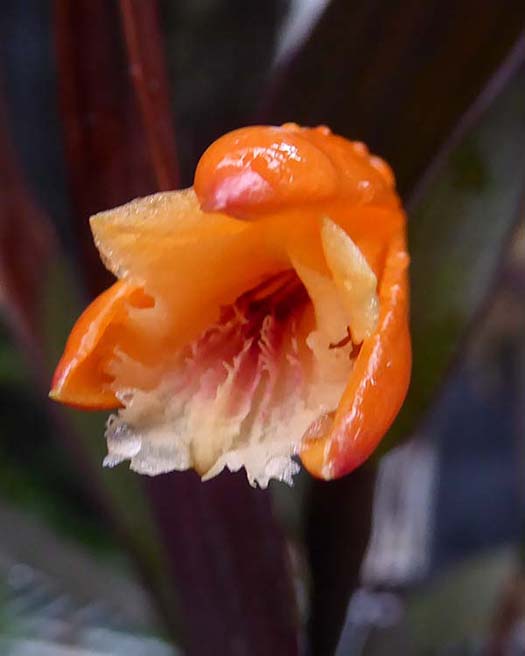 |
Sobralia croceaFlowers are relative small (1 - 1 1/2 inches) and don't open fully, but are bright and intricate. AS with other Sobralias, they are short-lived, but there are sequential blooms for each growth. The plant is compact, and seems to prefer shady conditions. |
|
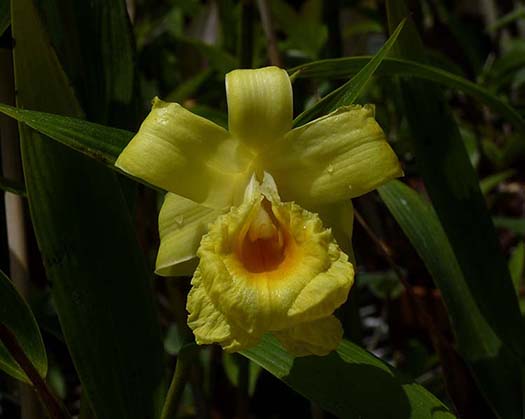
Sobralia xantholeucaColor is buttery-yellow, with darker throat. It seems to prefer to grow a bit shadier than Sob. macrantha. When I moved it to the shade area, it also started to get RO water, so I don't know if that was also a factor in its improved growth, but it is definitely doing better than it was in the sunny area. |
|
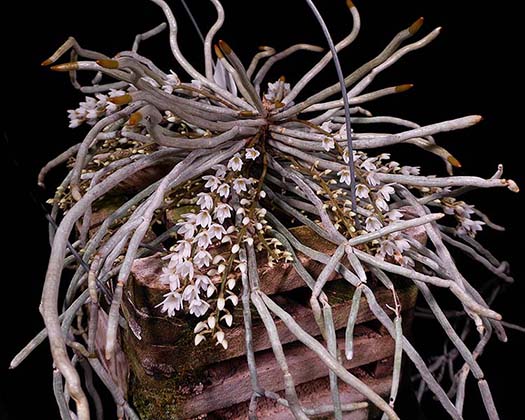
Microcoelia stolziiThis Angraecoid is completely leafless, photosynthesizing in its roots. It gets daily watering. It doesn't seem to be particularly fussy about water quality, but it does want to be kept damp. |
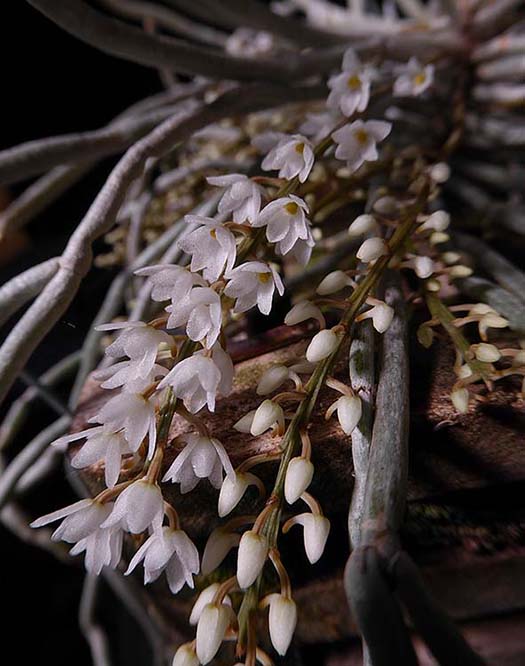 |
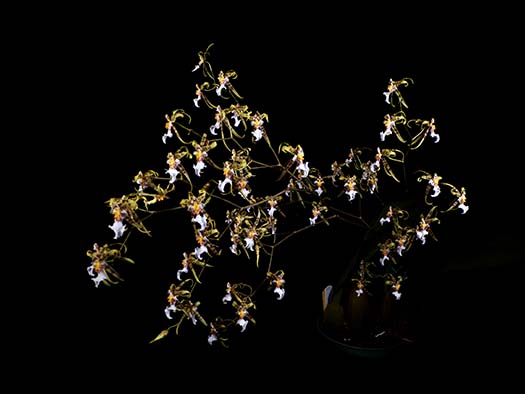 |
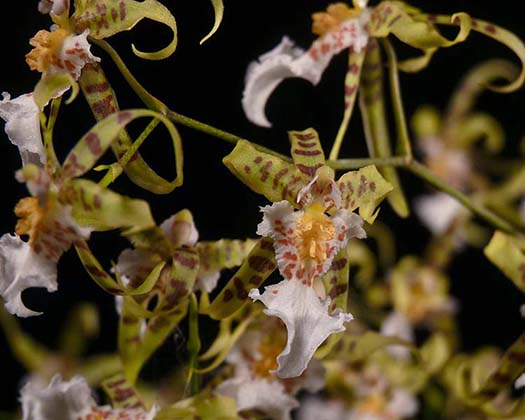 |
Oncidium phymatochilumThe flowers are small and spread out relative to the inflorescence, which has an amost cloud-like appearance. It grows in partial shade. |
|
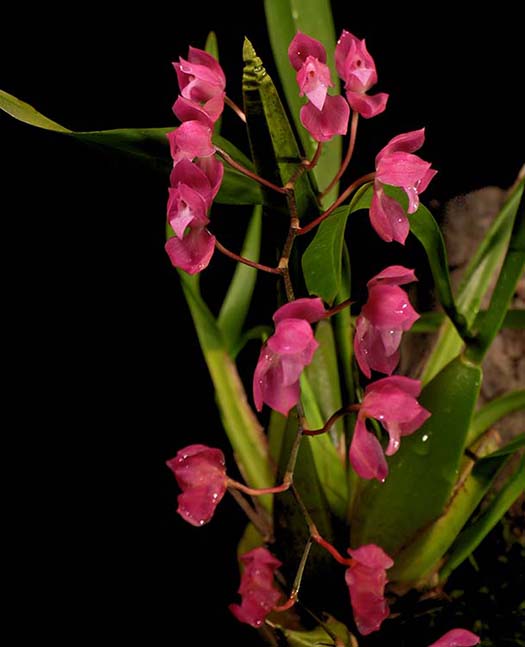
Symphyglossum sanguineumOr Cochlioda sanguinea or now Oncidium strictum (a problem with lumping, species names sometimes have to be changed because there is already is a species with the name once the genus is changed.). |
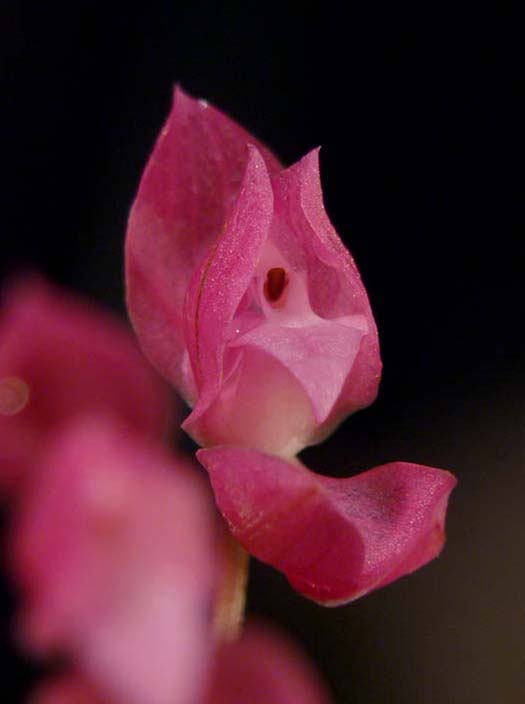 |
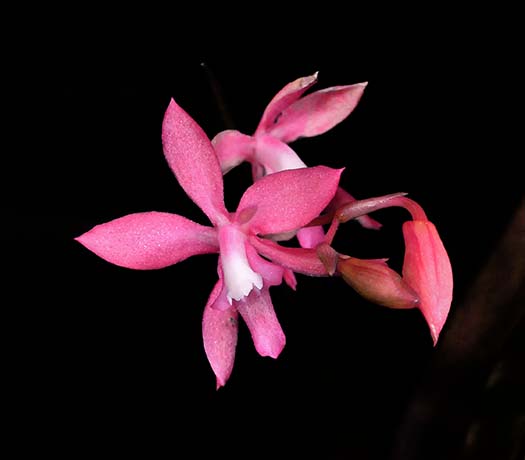
Cochlioda roseaNow Oncidium roseum. |
 reichenheimii.jpg)
Miltonioides (Oncidium) reichenheimiiI should have had a much longer inflorescence, but something ate the top part just as it was developing. I am glad that it had already started to branch, so at least some buds were spared. |
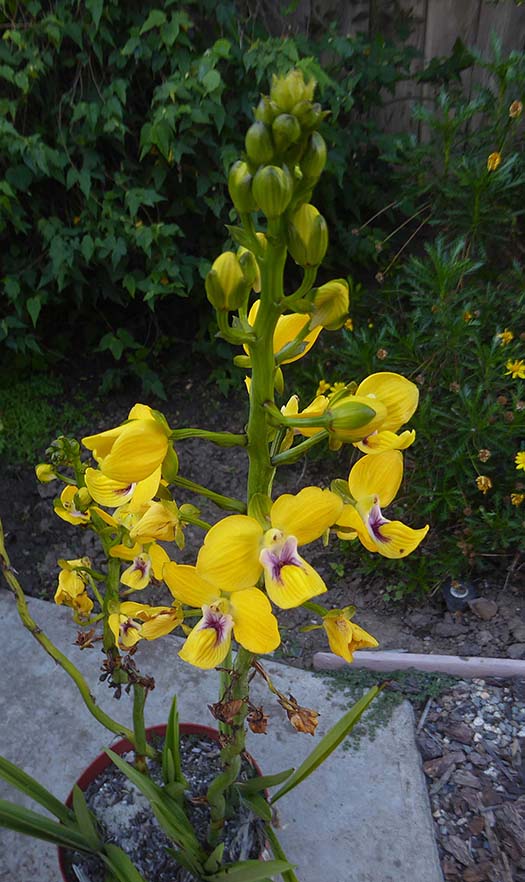 |
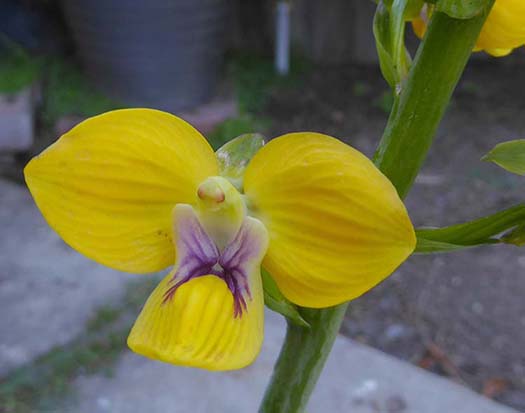
Eulophia speciosaThe plant is growing in sand. It gets no water except whatever rain falls during the winter. It doesn't seem to need thorough drying, since it certainly got rained upon this winter, but it also is tolerant of complete drying. It is native to much of Africa. |
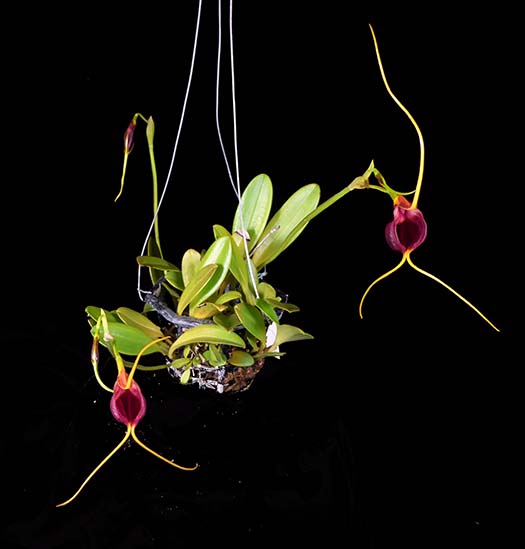
Masdevallia trochilusMy success rate for Masdevallias has greatly improved since I started using RO water. Inflorescences produce multiple flowers, sequentially. |
 |
 |

Masdevallia infractaAnother sequentially-blooming Masdevallia |

Maxillaria scalariformisThis has been a tricky one for me. Andy Phillips grows it outside, in a relatively unsheltered area, with great success. However, I have had them die after getting cold and wet in winter. I have not figured out the difference between my growing area and that part of the nursery. Coming from Panama, its habitat is around 1000 meters, so cold tolerance is marginal. I have tried it in the greenhouse, where it grows well but doesn't bloom much. So I have compromised, putting it the greenhouse for the coldest part of winter and keeping it outside the rest of the time. Having a bit of protection in winter, but the temperature variation of the outdoors most of the time, seems to be working well. |
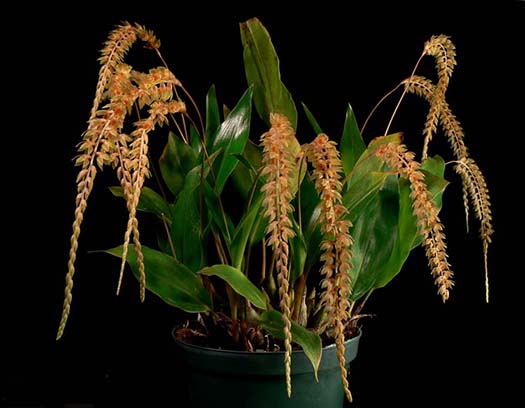
Dendrochilum glumaceumColor is not dramatic, but there's lots of flower power. The plant is very vigorous. |

Promenea xanthinaGrows on the shady side. |
 Stereochilus datatensisThis is a cold-tolerant Vandaceous miniature. Flowers are about 1/2 inch. The whole plant is about 2-3 inches. |
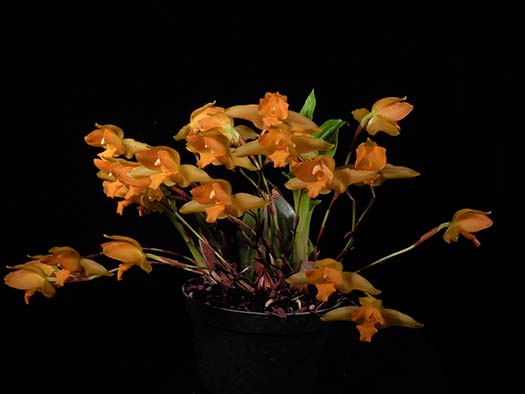 |
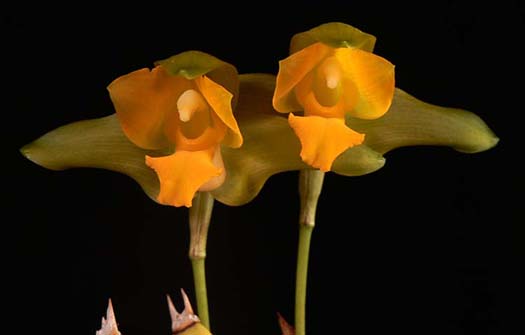
Lycaste consobrinaThe flowers emerge from bare pseudobulbs just before new growth starts. There are several Lycaste species that look very similar and have the same growth pattern. For me, this one is the most floriferous. It is also very fragrant. |
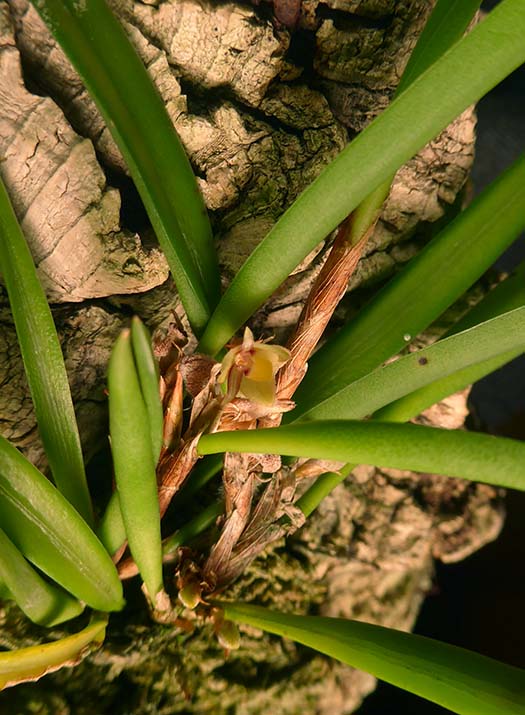 |
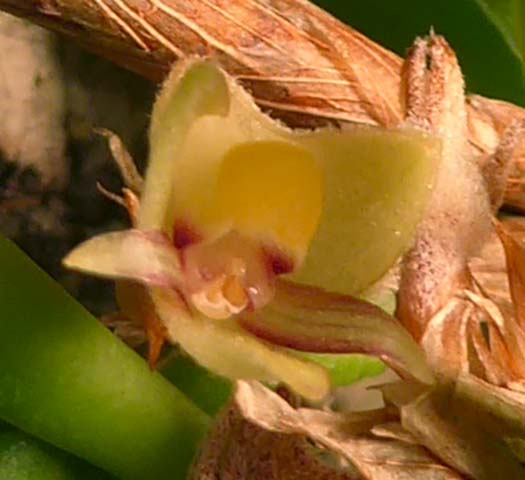
Ceratostylis himalaicaAs the name implies, this species comes from relatively high elevations in China and souteast Asia. I have owned the plant only about 6 months, received it bare-root. It does seem to have established nicely.
|
In the greenhouse... |
|
Podangis dactylocerasFlowers are crystaline and translucent. The habitat information from Jay Pfahl's website orchidspecies.com indicates that it grows as high as 1950 meters in west and central Africa, so it might tolerate coastal outdoor temperatures but it does so well with a bit of warmth that I don't want to take that chance. |
|
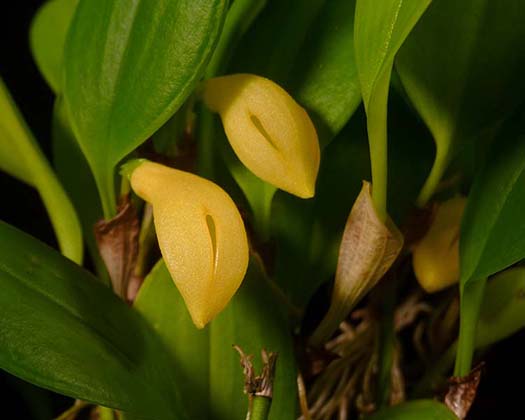 |
Zootrophion alvaroiThese flowers are as open as they are going to be. They look to me like ittle lanterns. The pollinator must be a gnat or similar tiny insect. |

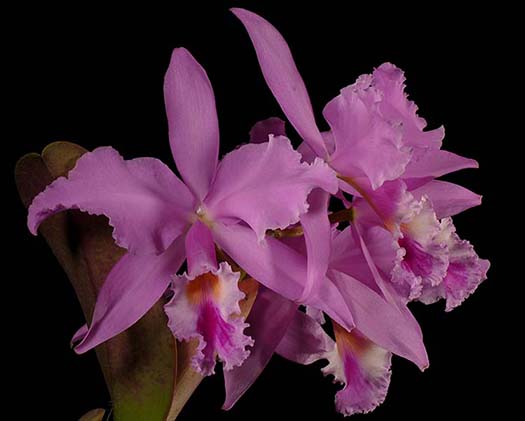
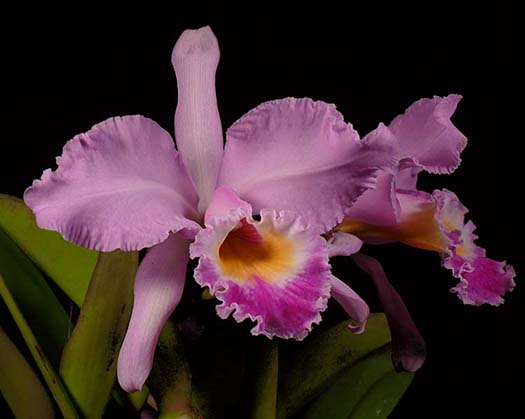
.jpg)

